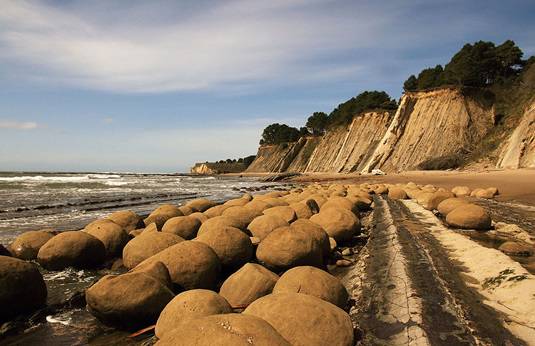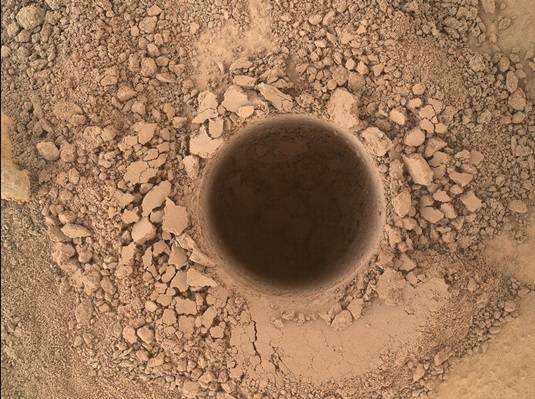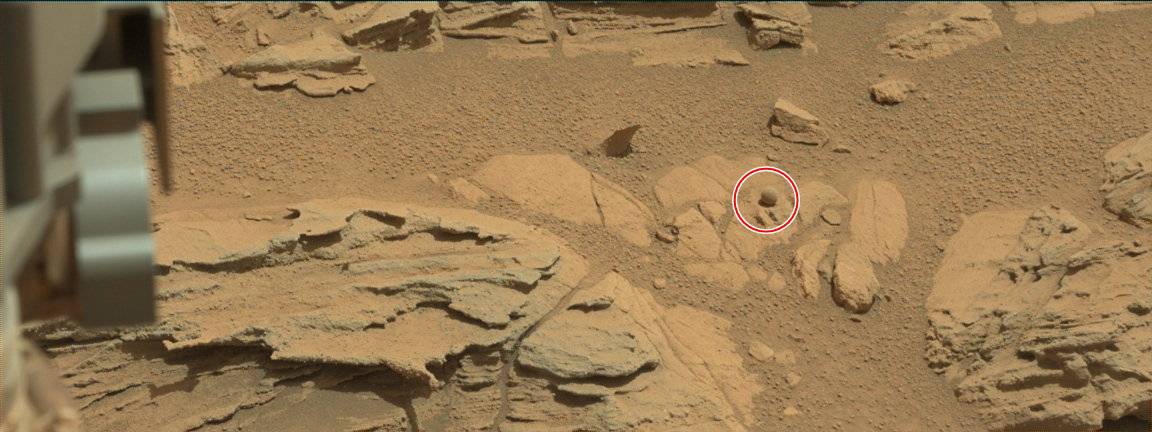This article is more than 1 year old
Alien gimp gag or cosmic golf ball? NASA tackles question everyone's asking
Curiosity snaps object on Mars then gets its rocks off
Pic Mars watchers have spotted another weird object on the surface of the Red Planet: images uploaded from the Curiosity rover feature a small, nearly perfect sphere that was photographed by the machine's MastCam.
The photo, which was snapped on September 11 and posted on NASA's JPL media section to be pored over by an army of citizen scientists, features a small ball sitting on a wind-blown rock. The one centimetre-wide object appears to be slightly darker than the surrounding rock, and has a light covering of dust, but otherwise looks most out of place on the unforgiving Martian surface.
So, what have we got here? Did a little green golfer slice it into Curiosity's path, or is it the remains of a kinky Martian's gimp gag? Actually, the answer is much simpler, and nearly as exciting from a scientific viewpoint.
"The spherical-looking rock in this image might be a harder concretion that weathered out of a softer sedimentary rock," a JPL spokesman told El Reg.
"Concretions can form during sedimentary rock formation when water is present in the pores of the rock and cementing minerals precipitate out of the water."
Such rocks are quite common here on Earth. The Theodore Roosevelt National Park in North Dakota is littered with the things, some more than 10 feet across, while others have been found that are so small they are mistaken for water-worn pebbles.

Concretion balls on California's beaches
Such balls have even been discovered on Mars before, by Curiosity's still-running predecessor Opportunity. In a paper in the journal Nature, scientists posited that the balls found by Opportunity were good examples of concretion that would have been formed when Mars was moist.
Which is what makes this week's discovery so exciting. Curiosity has already established that the Red Planet had running water, indeed it was one of its primary mission objectives, and the new ball is further evidence that Mars had a lot of water flowing over its surface at one time.
Forget the balls, let's get drilling
Quite how much water was around, and the effect it had on the landscape, is now what Curiosity is trying to find out. The rover has begun drilling into the base of Mount Sharp to examine its rocks.
"This drilling target is at the lowest part of the base layer of the mountain, and from here we plan to examine the higher, younger layers exposed in the nearby hills," said Curiosity deputy project scientist Ashwin Vasavada of JPL.
"This first look at rocks we believe to underlie Mount Sharp is exciting because it will begin to form a picture of the environment at the time the mountain formed, and what led to its growth."

Curiosity's latest bit of boring finds Mars is getting soft
The drilling went well, and NASA reports that the material it excavated is much softer than previous mining sites. The 2.6in (6.7cm) hole yielded a sample that is being sieved, and the remains will be placed inside the Curiosity rover for analysis if the team determines it safe to do so.
If it is decided that the rock won't clog up the hardware, Curiosity's internal lab will heat the sample to find out what exactly it is made up of and to get a better understanding of the chemistry of the environment the rover is traveling through.
Curiosity has driven five miles (8km) to get to this point, and the nuclear-powered space tank is going to be cooling its wheels for a while here yet. The team wants to focus less on moving the rover long distances and more on drilling down and finding out as much as we can about what lies beneath our planetary cousin. ®

